Vino In My Dino
-
91 Years Later
December 4, 2024 17:15
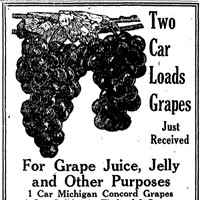
It is the 91st anniversary of the repeal of the 19th amendment and let’s celebrate with a few words. Prohibition was a long period in U.S. history, beginning in 1919, when most of the country was dry. I say that because you could still make your own wine should you be so fortunate to have access to grapes (with a permit you could make 200 gallons of homemade wine) or you could knock on the speakeasy’s door and get in with a special password. My grandparents were fortunate to pick up a distressed property in 1927 mid-Prohibition which included a shuttered winery and 25 acres of vineyard. They had to hold tight, farm the grapes and sell them to those home winemakers and wait for a few more years. Once the amendment was repealed on December 5 1933(better known as the 21st Ammendment), they dusted off the equipment and made wine in 1934. This year was our 90th vintage of producing wine, by the way.
While we don't face the same challenges of having a Prohibition today, there are many other challenges we face-as winemakers and grape growers. My hope is to enourage us all to continue with the traditions surrounding wine (for centuries!) and including this convivial beverage wherever there are friends and families, a meal or a visit, and enjoy the time spent reminiscing and celebrating those moments.
Let’s commemorate this day with a glass of your favorite wine. I’ll have Zinfandel for sure-it is hard to pick just one of ours but tonight I’ll have our Home Ranch Vineyard Legacy Block in my glass.
-
Come Over October: It's About Community
October 15, 2024 16:45

While I was growing up at the winery I loved the magic of the vineyard, each season bringing something different. I also loved wandering around the vineyards with my sisters, playing among the vines when they were in full canopy—large leaves and canes draped off of the head-pruned vines. We made vine houses in the summer, slid down the hill on cardboard sheets over the green grass of spring, watched as my uncle John drove the tractor and plowed the earth revealing the rich soil. I now marvel at the fall season as the leaves turn color, drop away and the vines become bare again, soon to be pruned. There is also magic, practical magic, in the cellar as grape juice turns into wine.
The story is in the bottle, and like the genie of old tales, let the story out by pulling a cork or twisting off the cap. Jelly jars for glasses or Riedel, it doesn’t matter. Go stemless, take the mystery out and let the magic and stories into the meal or conversation. Generations of folks before us enjoyed conversation and wine, like those of us in this photo!
This week we gathered to record our thoughts on the campaign and the importance of coming together. (Video coming soon.)While we were talking about wine and its importance in daily rituals of life we also made plans get together and celebrate as a community. You may recognize Shelley Rafanelli, Vicky Farrow and Kim Stare Wallace, all wonderful Dry Creek Valley winery owners, who share our stories and our wines with all of you! Let’s continue or start your own tribe, with new moments, enlivened dinners, and good friends.
-
Come Over October
September 24, 2024 09:45

October is fast approaching as I write this and Fall is upon us as well. The weather is changing, the days are getting shorter, and the smell of wine fermenting the 2024 vintage is wafting through the air.I wanted to take a moment to savor this time of year and share a campaign named Come Over October, started by Karen MacNeil and PR professionals Gino Colangelo and Kimberly Noelle Charles. The idea is to encourage friends, family, and colleagues to “come over” during October. Focusing on sharing wine, celebrating friendship, and in-person connection.
Wine is nearly ageless in that it has been a part of our tables for 8000 years and counting. Wait, the counting part depends on all of us, you included! It involves those who make it, sell it, market it and YOU who enjoy it at home or in a favorite restaurant, over a conversation or a meal.
-
A Legacy Continues!
September 24, 2024 09:43

Part of the excitement of being a small family winery is I get to work with winemaker Montse Reece to develop new wines to add to our portfolio. She knows the vineyards well, this is her 18th harvest at Pedroncelli! These are small lot of single vineyard estate wines (blocks really) that are deemed exceptional in quality. In the coming months, we are introducing four new wines.
2022 Legacy Block Home Ranch Vineyard Zinfandel
The inaugural release of our Legacy Block Zinfandel is a celebration of the grape here at Pedroncelli. Our house is founded on this versatile grape and we now have four prime examples of what we and Dry Creek Valley can produce—stellar Zins!
Zinfandel has been planted on the property since 1904. The founders Giovanni & Giulia Pedroncelli purchased a shuttered winery, a home, and 25 acres of mostly Zinfandel in 1927. A second generation was planted on the property in the early 1980s. The Legacy Block was the third generation and was planted in 2016.
When Vineyard Manager Lance Blakeley was choosing the clone to plant on the 3 acres of hillside, he chose the Rockpile Clone which was developed to the north of us and proven to produce high quality fruit on steep hillsides. It also sets a smaller more manageable crop so the fruit ripens evenly. This is important because Zinfandel is a famous uneven ripener.
Once the vineyard began to produce fruit it caught winemaker Montse Reece’s eye. She noticed that it showed a different side of the Zinfandel grape-one she had not detected in our other Zinfandels. She described the aromas as distinctive with wild berries, licorice, pomegranate and baking spices.
The yeast she chose to ferment this Zinfandel was also derived from the Rockpile area and she feels complements the grapes while they ferment, bringing out the best in the fruit and adding complexity to the wine. The Legacy Zin is a very aromatic lighter-style zin. Montse uses American oak from Missouri with a lighter toast showcasing the fruit better without overpowering the wine.
The legacy indeed continues as we sourced the fruit from the our latest replanting of Zinfandel.
-
Everything Old is New Again
September 24, 2024 09:39

Part of the excitement of being a small family winery is I get to work with winemaker Montse Reece to develop new wines to add to our portfolio. She knows the vineyards well, this is her 18th harvest at Pedroncelli! These are small lot of single vineyard estate wines (blocks really) that are deemed exceptional in quality. In the coming months, we are introducing four new wines.
Block 11 Reserve Sauvignon Blanc
We have been making Sauvignon Blanc for nearly 30 years, beginning in the mid-1990s. John Pedroncelli established this grape on our East Side Vineyard and Dry Creek Valley, especially in our area, is the perfect climate with the best soils for producing exceptional fruit. It is the only white wine grape we grow on the estate.The two blocks, numbers 6 and 11, each picked at a different time bring out the two sides of the grape from the grassy to the tropical fruit.
Even as far back as the 90s we made two styles of Sauvignon Blanc: one in oak (Fume Blanc) and one with very little oak (Sauvignon Blanc). At the turn of the century, we adjusted the portfolio and landed on just one, the unoaked style, and added a screw cap. In 2023 as we looked at the quality of estate fruit, we asked Montse what she would like to create, and which vineyard block she would work with to make a reserve style. She happily pointed out Block 11 as the vineyard that produces the reserve quality she looked for and chose to barrel ferment the wine.
It is fun to reflect that we have come full circle with two Sauvignon Blancs from one end of the spectrum to the other. Each one showcases the versatility of the grape. Which makes the release of our Reserve Block 11 Sauvignon Blanc so exciting.
-
A Year Filled With Change
April 14, 2023 16:48
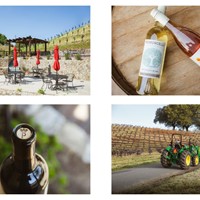
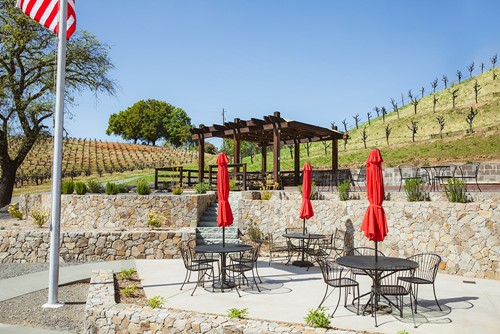
April is Down to Earth Month, and as a winery committed to sustainability, we wanted to take a moment to reflect on our efforts to protect the environment. Our winery has undergone some major changes this year, including the renovation of our hospitality grounds and refreshed our tasting room with a new look. We've created a warm and inviting atmosphere for our guests to relax and enjoy our wines.
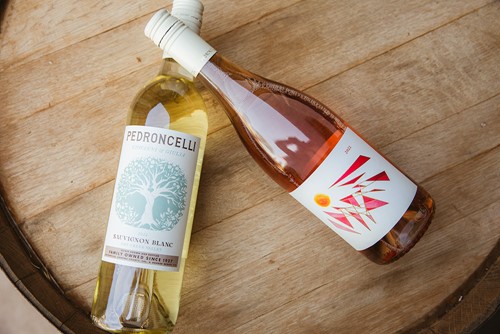
But that's not all! We're thrilled to announce that we're continuing to introduce our new labels, starting with our 2022 Giovanni & Giulia Sauvignon Blanc and soon our 2022 Rosé. These new labels are sleek, modern, and embody the essence of our winery, embracing our Italian heritage.
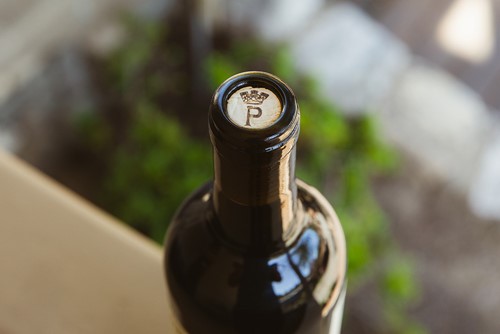
And now, onto the big news. Starting with the release of our 2021 cork-finished red wines, we'll no longer be using capsules on our wine bottles. We've realized that these have a significant impact on the environment. Most capsules are not biodegradable and end up in landfills where they can take hundreds of years to decompose.
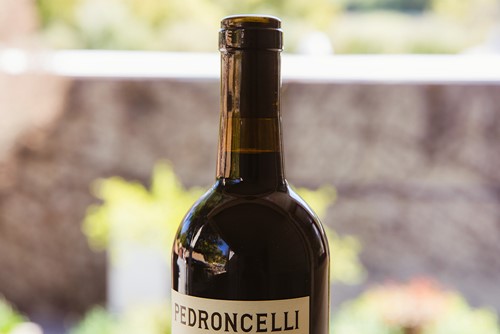
We're taking a stand for sustainability and taking small steps like eliminating capsules to make a big impact on the environment. Our bottles will still be sealed with high-quality corks to maintain the freshness and flavor of our wines. By doing so, we'll be reducing our carbon footprint and investing more in our cork supply chain to ensure that our corks are of the highest quality.
Small steps like these can help to preserve the natural beauty of our region for generations to come. Come on over and see our changes for yourself, and let's celebrate Down to Earth Month together! Join us in our efforts as we find ways to take care of Mother Earth.
-
Pass Me the Ah So
January 5, 2023 16:49
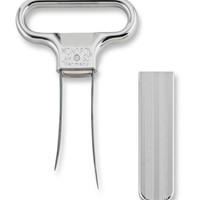
In August of last year (or September—it’s been so long I can’t really remember) I celebrated my 40th year in the wine business. It all started in Cloverdale at a little winery called “Cordtz Bros.” I’ll never forget. One of my first jobs was patching holes in bin liners with epoxy. Ah, the romance of the wine business. This was soon followed by climbing into the bed of a dump truck to rearrange the stems being spit from the de-stemmer.
The same season I moved on to what was then called “Souverain”-later to be renamed “Chateau Souverain” and finally purchased and renamed “Coppola”. The story is true, the names were changed to protect the innocent. I continued my glamorous journey at Souverain by being a press operator. I stood there and watched the gurgling must fall into the press. When the hopper was full, I would press the button which sounded a buzzer alerting the pump operator that the press was full. Thrilling work. I did get to work with a childhood friend that season—and he still works there!
From there I moved on to Alexander Valley Vineyards—this was a great period of growth for me. I started in the cellar in December of 1982. It was cold. Wet. Romantic to say the least. I spent a couple seasons in the cellar, I even ran the bottling line (learning a ton-no pun intended). This time in the cellar gave me a foundation that I still depend on today. In 1985 I moved into Direct to Consumer Marketing (it wasn’t even a thing yet). I managed the Tasting Room and developed their wine club. There were, I think, three wine clubs in California at the time. My boss said “we should start a wine club, like a book of the month club”. That was all the direction I got. I designed a database that printed the charge slips on a daisywheel printer. I’ll tell you about it sometime! This is where I was working when Julie and I started dating and later on were married.
From there I was recruited by a company to sell winery equipment-bottling lines, presses, filters—big capital expense stuff. I’d never done anything like it in my life. I am not the least bit mechanically inclined. But as it turned out, I became quite an effective technical salesman. Again a huge growing time for me personally and professionally.
Simultaneous to selling equipment I began selling wine corks. It was a joint venture. After about seven years I migrated from the combination to strictly corks. I had a great client base and many of those are still friends today. Some, I duck when I see them in the store!
In 2004 I came to work for Pedroncelli. It was a great relief to get out of the incredibly high pressure, and extremely competitive cork industry—I often said that, culturally, it was like I stepped out of a movie on fast forward into a movie on rewind. That was 18 years ago. Where has the time gone?
I have had the joy of watching Julie grow into her role, of being her advocate and foil. We’ve planned together, entertained together and told the family story literally across the country and around the globe. We weathered the great recession together, the great lock down, and maneuvered the ever-changing landscape of the wine business. It’s been quite a ride!
As many of you know I’ve had a few medical challenges in the past year and a half. And while things seem to be stable, the treatment causes a great deal of fatigue. In short, the ol’ grey mare ain’t what she used to be. Fortunately, our new General Manager has picked up the reins and a great deal of the job I used to do. He’s been so gracious and supportive, I just can’t thank him enough.
It’s been said that the only thing consistent is change. I am at that point in my career where change is upon me. Beginning this month I am taking on a new role as “Special Projects Manager”. It’s a nice way of saying that I’m cutting back to half-time (sort of) and focusing on development closer to home. I’ll be working with our DTC team to expand that program-it’s my roots in the business, and we have such a great story to tell. I enjoy it and I don’t have to get up at 3:30 am to get to an airport. I’ll be working on a few other things to help us grow, but most joyfully, I’ll be back to being Julie’s advocate and foil. We work so well together and I really have missed having the time to work with her.
So here we are. More than forty years hence and I’m back to the side of the business I love-working directly with the end consumer. When I got started in this business, Ah So! wine openers were all the rage. Now, I’d need one to open a bottle of 1982. It was a good year. I still have the same email address, if I’m on property when you stop by the winery maybe I’ll see if I can find a bottle worthy of the skilled use of an Ah So! for us to sample together.
It's funny. When managers at wine distribution companies are being put out to pasture they become “key accounts managers”. I’ll be a “Special Projects Manager”. There’s wisdom in tenure…I want to share some of mine with my nephew, Mitch, and our DTC manager, Colin, before I become too cranky. If it isn’t already too late! Now, can someone please remind me where we put that Ah So!?
Yours Truly,
Ed St. John
-
Seasons in The Cellar: Scale House
August 18, 2022 10:43
Montse walks us through the scale house as we prepare for harvest.
Follow us on social media to stay up to date with our harvest season.
-
Seasons In The Cellar: Summer Edition
July 25, 2022 09:00
As harvest is fast approaching in our Dry Creek vineyards, our winemaking team and cellar crew prep all of the empty tanks to make room for a new vintage. It's the calm before the storm.
Follow us on social media to stay up to date with our harvest season.
-
What is Grape Veraison
July 21, 2022 12:34
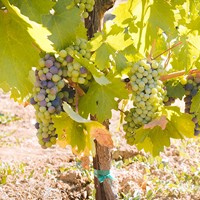
UNDERSTANDING GRAPE VERAISON
Each summer, grapes begin to change color in our Dry Creek Valley zinfandel vineyards. Grape veraison is the beginning of ripening, when red grapes change from green to purple colors. Veraison usually begins in July during moderate weather years, but in cooler vintages, zinfandel grapes don’t start changing color until late July, even early August at times. During ideal weather conditions, the time from coloration to harvest is typically about forty-five days.
There’s much more to grape veraison than the fascinating color change we can see with our eyes. To allow vines to focus all their energy into the existing clusters hanging on their shoots, the grapes cease growing during this period of their lifecycle. This allows sugars to increase and acids to decrease.
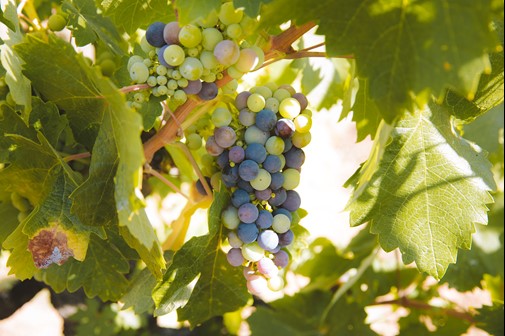
WHY EVEN GRAPE VERAISON IS IMPORTANT
Winemakers want the grape clusters to go through veraison quickly, because the uniformity of coloring within the clusters equals uniform flavors at harvest time. Being able to harvest uniformly ripened grapes is one of the keys to making a velvety, balanced Pedroncelli Zinfandel. If some grapes in the clusters are under-ripe, some perfect and some overripe, the finished wine will express some combination of too dry, too fruity and even too hot or high in alcohol. Only uniformly colored zinfandel grapes can make a balanced, smooth wine.
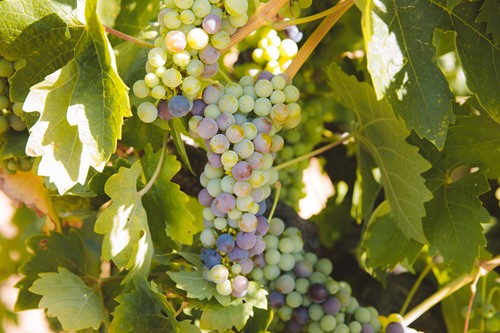
ADDRESSING UNEVEN COLORS DURING VERAISON
The warmer the weather, the more likely the grapes will change colors swiftly and uniformly. So, what does a winemaker do when the grapes change color unevenly? At Pedroncelli, we wait until veraison has taken 80% effect on our zinfandel vineyards, then we’ll start to trim off the “wings” and clusters that are still green. This sacrifice ensures the remaining grapes on the vine develop consistent flavors which will translate later into the wine.
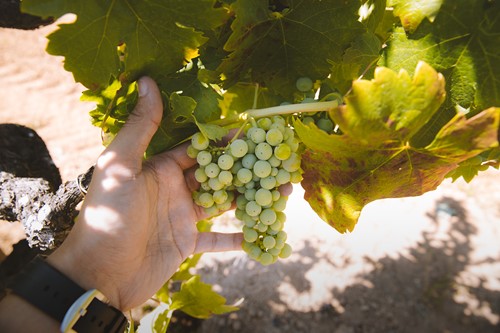
Here's an example of a cluster with a “wing.” A wing is a small bunch that shares the same shoot as a fuller cluster.
During ideal growing seasons, moderately warm temperatures help veraison happen at a perfect pace. Zinfandel, Cabernet Sauvignon and Merlot grapes start changing color in Dry Creek Valley during July and August, depending on when vineyard pruning occurred and the microclimate of each vineyard. In an average year, Pedroncelli’s Dry Creek vineyards complete veraison over two to three weeks.
DO GRAPES CHANGE COLOR AT DIFFERENT TIMES?
Different red grapes varieties go through veraison at different times. Just like during harvest, we don’t always pick the same grapes at the same time. It is spread out over several weeks. If Zinfandel is in veraison now, then we’ll be picking about the second week of September. Cabernet Sauvignon on the other hand has not even started veraison and we’ll expect to pick these grapes at the end of September or beginning of October. It always depends on the weather between now and then too.
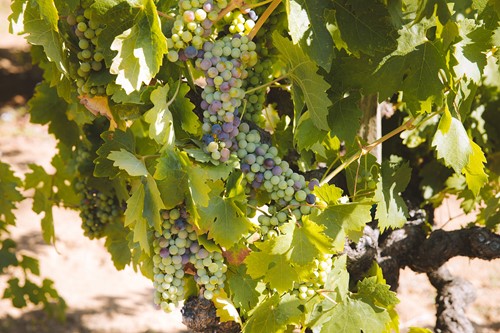
Follow us on social media to stay up to date with our harvest season.
Categories
- COVID
- Follow the Vineyard
- Note from Home
- PairItWithPed
- Pandemic
- pedroncelli
- Port
- Postcards from Home
- Pruning
- Seasons in The Cellar
- Tasting Room
- Thanksgiving
- Vintage Notes
- Winemaking
- Women's History Month
Recent posts
-
91 Years Later
-
Come Over October: It's About Community
-
Come Over October
-
A Legacy Continues!
-
Everything Old is New Again
Popular tags
- cheese
- COVID19
- Mother Clone
- Bushnell Vineyard
- Crop set
- American Oak
- Recipes
- Schotzki
- food and wine
- family
- Reserve
- Estate Vineyard
- Lake Sonoma
- Sonoma County
- Rosé
- Finding Your Roots
- Follow the Vineyard
- Barrels
- Pedroncelli
- Holding steady
- Merlot
- cooking with wine
- Anniversary
- PairitwithPed
- 1974 Cabernet Sauvignon
- Pruning
- note from home
- newsletter
- COVID Coffee Chat
- Cabernet Sauvignon
- Harvest 2022
- Courage Zinfandel
- Library Wine
- Sauvignon Blanc
- Habit
- Seasons in The Cellar
- Block 007 Cabernet Sauvignon
- Heat wave
- Cellar Master
- Pantry
- Oak
- OpenThatBottleNight
- Cookies
- Homecooking
- Down to Earth
- Pandemic
- French Oak
- Four Grapes Port
- Dry Creek Valley
- Easter









